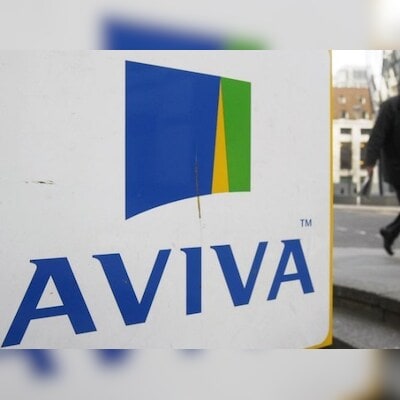)
UK-based Aviva spokesperson has said, ‘We do not comment on speculation or ongoing legal matters’ | Representational
An Indian tax agency has found that British insurer Aviva breached local regulations capping commissions to sales agents with a system of fake invoices and clandestine cash payments, according to a notice seen by Reuters.
In an attempt to grow operations, Aviva’s India business paid about $26 million between 2017 and 2023 to entities who purportedly provided marketing and training services, according to the tax notice sent to Aviva, dated Aug. 3.
But the vendors, who did not perform any work, were actually a front for channeling funds to Aviva’s agents, said the Directorate General of GST Intelligence (DGGI), which is responsible for policing violations of indirect taxes.
“Aviva and its officials have indulged in a deep-rooted conspiracy and used the modus of fake invoices (without receipt of services) to pass on certain money to … insurance distributors of Aviva,” investigators wrote in the notice.
Details of the notice, which is not public, are reported by Reuters for the first time. Such “show cause” notices typically require companies to explain why authorities should not issue penalties for their alleged acts.
The case is part of broader investigation into over a dozen Indian insurers for alleged evasion of $610 million in unpaid taxes, interest and penalties. The roughly $26 million in fake invoices were used by Aviva incorrectly to claim tax credits and evade $5.2 million in taxes, the notice alleged.
In response to Reuters’ questions, a UK-based Aviva spokesperson said: “We do not comment on speculation or ongoing legal matters.”
Its Indian operations did not respond to queries. A person familiar with the matter told Reuters the company intends to rebut the notice’s allegations but has not yet responded.
The 205-page report included screenshots of emails and WhatsApp messages between Aviva executives and insurance distributors, in which they discussed ways to skirt compensation regulations. It also contained summaries of interviews conducted by tax officials with executives like Aviva India chief financial officer Sonali Athalye, who described how payments were made.
Then-Aviva India chief executive Trevor Bull was copied on a 2019 email discussing payments over regulatory limits, which indicates “senior management of Aviva is also aware about this,” investigators wrote.
Bull and Athalye, as well as Indian tax and insurance authorities, did not respond to requests for comment.
The company faces roughly $11 million in penalties, which is roughly its 2023 profit from selling life insurance in India.
Aviva’s India business is run in joint venture with Dabur Invest Corp., a prominent local firm. Aviva owns 74 per cent of the business, after increasing its stake from 49 per cent in 2022.
Dabur did not respond to Reuters’ questions.
India is a relatively small market for Aviva, which reported global operating profit of nearly $2 billion in 2023. It faces intense competition from the likes of state-run LIC, which controls about two-thirds of the market.
Nonetheless Aviva, which sells individual life insurance products and corporate plans in India, sees the world’s most populous nation as a growth market.
Data from India’s insurance regulator show that life insurance premiums had a value equivalent to 3 per cent of national GDP. The equivalent ratio in Britain is 8.1 per cent.
Aviva’s tactics were an effort to “garner more business and market share,” investigators wrote.
India’s insurance regulator in 2023 relaxed commission limits that had long been in place, but it previously capped commissions on new policies at between 7.5 per cent and 40 per cent, depending on the product. Renewal commissions were even lower.
In the emails recovered by investigators, Aviva officials described paying commissions over regulatory limits as “ORC,” which CFO Athalye told tax investigators last year stood for “Over Ride Commission” and was “interchangeably used with terms like marketing and sales promotion expenses.”
Vendors who generated fake invoices were given a cut of about 5 per cent of the amount billed, according to investigators.
An Aviva email from Nov. 2022 showed the company paid 17 per cent commission in line with rules to one insurance distributor, but “committed” to a total payout of 75 per cent “out of records by raising invoices from marketing and advertisement vendors.”
The email showed one Aviva executive seeking approval for ORC payments, with a table listing numbers for business generated, commission already paid, and pending ORC.
Another executive responded: “Appended payout stands approved.”
In a separate Nov. 2022 email, an Aviva executive shared a spreadsheet detailing payments to a broker who generated business of $906,000 in a year and received official commission of $156,600, as well as ORC of $400,000.
Aviva also hired 559 people that it called “agent mentors” to train sales agents.
But no such services were provided: instead, the agent mentors issued fake invoices to Aviva to facilitiate excess commissions to agents, according to the notice.
In at least one instance, an agent and agent mentor had familial ties.
Arunachal Pradesh-based insurance agent Bymat Taloh told tax investigators in May that Aviva advised his family to appoint an agent mentor. His sister, Aina Mimum Taloh, took up that role.
Aviva “suggested that as per company policy, agent mentor is required for disbursement of additional commission,” the notice said, citing Bymat’s testimony.
Aina “did not perform any activity for Aviva as agent or agent mentor directly,” investigators wrote.
Reuters could not reach the siblings for comment.
Aviva officials also facilitated payments by taking photos of 10-rupee bills and sending them to both vendors and insurance agents.
Insurance agents then approached vendors with the banknote photo to get their excess commissions in cash, investigators said.
